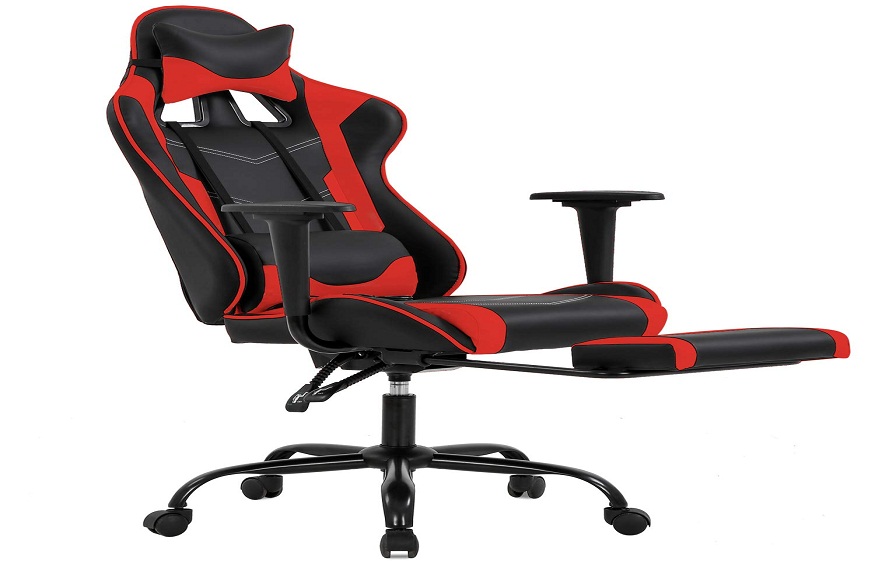For dedicated gamers, content creators, and professionals who spend extensive hours engaged in digital tasks, the desktop setup is the foundation of performance. It’s more than just a place to sit; it’s a precisely engineered environment where focus and physical well-being converge. Achieving peak efficiency, maintaining long-term spinal health, and maximizing comfort rely entirely on the dynamic pairing of an ergonomic gaming chair and a functional gaming table. When these two pieces are chosen strategically and aligned correctly, they create a synergistic command center that supports both high-intensity action and all-day endurance.
Part 1: The Gaming Chair – Ergonomics Engineered for Endurance
The modern gaming chair has evolved from a simple piece of furniture into a sophisticated ergonomic tool. Its design goes beyond aesthetics, focusing entirely on providing sustained support to the spine, shoulders, and wrists during long, static periods of screen time.
Core Pillars of Ergonomic Support:
- Integrated Lumbar Support: This is arguably the most critical feature. The best chairs move beyond simple, removable cushions and utilize built-in, adjustable lumbar support. This mechanism allows the user to precisely fine-tune the height and depth of the internal curve to perfectly match the spine’s natural inward (lordotic) curve. This targeted support prevents slouching, minimizes disc pressure, and significantly reduces the risk of chronic lower back pain.
- Multi-Directional Armrests (4D Functionality): Armrests are vital for relieving strain on the shoulders and neck. The industry standard for performance seating is the 4D armrest, which offers comprehensive adjustability across four dimensions:
- Height (up/down)
- Depth (forward/backward)
- Width (side-to-side)
- Pivot Angle (inward/outward rotation)
This complete customization ensures the user can consistently achieve the ideal $90^{\circ}$ elbow angle, aligning the forearm perfectly with the height of the table and peripherals to prevent wrist and shoulder tension.
- Advanced Materials for Comfort: While many chairs feature durable synthetic leathers, long-session comfort requires effective thermal management. For warmer environments, materials like breathable mesh or high-resilience hybrid fabrics are superior, as they promote airflow and prevent the uncomfortable heat and moisture build-up that leads to fatigue and distraction.
- Flexible Adjustments: The chair must allow the user to easily adjust the seat height, and ideally, the seat depth (sliding the seat pan). Proper depth ensures two to three fingers’ width between the back of the knees and the seat edge, preventing pressure that can restrict circulation to the legs.
Part 2: The Gaming Table – Stability, Space, and Smart Organization
The gaming table is the stable foundation for all technology. Unlike conventional desks, gaming tables are structurally engineered to handle the substantial weight, continuous movement, and complex wiring required by modern multi-monitor, high-performance computing setups.
Essential Features for Performance:
- Motorized Height Adjustability (Sit-Stand): The most valuable feature in a modern setup is the motorized sit-stand capability. This allows the user to quickly and seamlessly transition between sitting and standing postures throughout the day. This capability is critical for long-term health, mitigating the risks associated with prolonged static sitting and demonstrably improving alertness and focus during extended work or gaming sessions.
- Superior Cable Management: Cable clutter detracts from focus and poses a physical hazard. Quality gaming tables feature sophisticated integrated cable management systems. This includes recessed cable trays, magnetic channels, or large, strategically placed grommets, all designed to route power strips, peripheral cables, and monitor wires cleanly beneath the surface.
- Unwavering Durability and Stability: Given the collective weight of multiple monitors, heavy-duty computers, and the forceful actions during high-intensity gaming, the table needs an exceptionally robust steel or aluminum frame. This structural integrity ensures zero wobble or flex, even when the table is elevated in the standing position or during aggressive keyboard and mouse use.
- Optimized Surface Area: Gaming tables prioritize generous depth and width. This ample surface area is essential for two key reasons:
- It allows users to maintain the ergonomically correct viewing distance from large or multiple monitors.
- It provides sufficient space for an oversized mouse pad and all necessary peripherals (keyboard, microphone arm, stream deck) without cramping the user’s movement.
The Synergy Principle: Alignment for Peak Performance
The true success of the ‘battlestation’ is realized when the chair and table are intentionally aligned to the user’s specific biomechanics:
- The 90-Degree Rule: The height-adjustable table should be set to the height that precisely matches the height of the chair’s 4D armrests. When sitting, the armrests should align flush with the desk surface, allowing the user’s forearms to transition smoothly from the chair to the keyboard and mousepad. This minimizes tension and keeps the shoulders relaxed.
- Neutral Posture: The robust lumbar support of the chair locks the spine into its neutral curve, while the vast surface area of the table ensures the monitors are positioned directly at eye level and at arm’s length, preventing neck strain.
By focusing on these specific ergonomic, structural, and functional details, a dedicated user can construct an environment that actively supports physical health, minimizes fatigue, and ultimately enhances performance, making the investment in both a specialized gaming chair and a robust gaming table invaluable.

